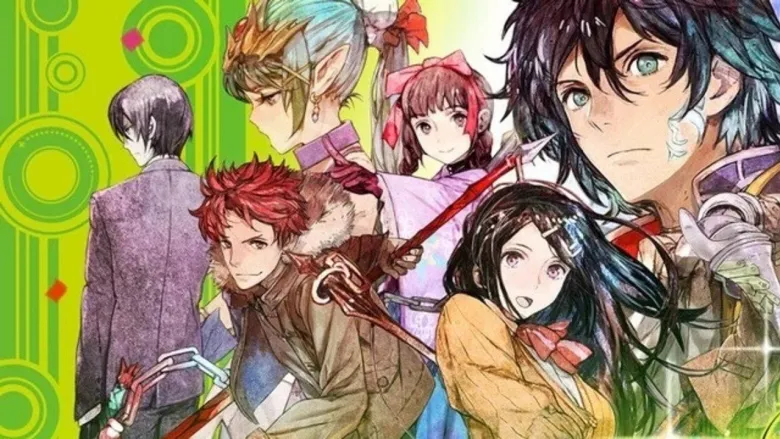
This article was originally published in Italian on Thegamesmachine.it in 2016.
When it seemed like the Wii U had exhausted its lineup of exclusive Nintendo titles, along came Tokyo Mirage Sessions #FE, the long-awaited crossover between Shin Megami Tensei and Fire Emblem. Announced three years ago and then disappearing off the radar of global releases, it finally arrives quietly on a console nearing the end of its life cycle. Despite the sword-and-sorcery origins of the two parent franchises, this new Atlus title leaves no room for the epic atmosphere found in the recent Fire Emblem Fates for the Nintendo 3DS, nor for the esoteric themes so beloved in the Persona series. Instead, Tokyo Mirage Sessions #FE takes to the gritty streets of metropolitan Tokyo, featuring a cast of characters who feel more like they’ve stepped out of a Japanese talk show than from the imaginations of Kazuma Kaneko and Shigenori Soejima, the renowned character designers of Shin Megami Tensei.
That said, as soon as you dive into the gameplay mechanics, the game’s near-complete adherence to Atlus’ J-RPG philosophy becomes apparent, with elements borrowed from Nintendo’s strategy series serving as mere cameos, references, or loaned characters. The iconic elements that have defined the timeless appeal of these two beloved J-RPG series are filtered through a sugary J-POP lens, wrapping the gameplay premise in a carousel of anime-style sequences that blend seamlessly with the lighthearted atmosphere promoted by this curious crossover.
Tokyo Mirage Sessions #FE tells the story of a talent agency—singers, actors, and dancers who, thanks to their special abilities, have connected with Mirages, anthropomorphic magical creatures seemingly intent on conquering the human world. Among these Mirages are some of the most beloved heroes from the Fire Emblem series, and it’s in their relationships with the human protagonists that the game’s “gimmick” reveals itself. Much like in Persona, the classic Nintendo heroes grant the main characters of Tokyo Mirage Sessions superhuman abilities and access to the classic magic spells of the Atlus series. Between Dia, Agi, and Bufu, it quickly becomes clear that the showbiz setting is just another backdrop for a narrative heavily inspired by the super sentai genre, where a group of chosen ones, each identified by a specific affiliation or talent, transforms in flashy sequences to fight evil.
I’ll be honest—given the premise, I didn’t expect much from the story, and my hands-on experience with the game seemed to confirm my expectations. Tokyo Mirage Sessions #FE is a celebration of clichés and tropes from Japanese youth storytelling, featuring predictable scenarios, absurd dialogue, and enemies defeated through the power of friendship, love, courage, and other “innocent and shiny” values that Toei Animation series have instilled in us over the years. It’s disappointing to admit, but from a narrative standpoint, it would have been nice to see the Atlus side of the development team push itself harder, as the Fire Emblem presence in the game is little more than a shadow. There’s nothing outright terrible or poorly executed here, to be clear, but it’s unlikely that Tsubasa and her friends will leave a lasting impression on long-time fans of the genre. The cast of protagonists is little more than a backdrop to the already mentioned female lead, who takes center stage with her journey into the world of Japanese idols (much to the detriment of the other characters).
If you want, you can deepen your knowledge of the other supporting characters during “interlude” phases that take place between the main story chapters. These are moments when you can focus on the personal stories of your friends through dedicated side missions, somewhat reminiscent of the famous “social links” from Persona 3 and 4. I say “if you want” because, unlike the heroes of Persona, the cast of this title shows its full hand the moment they’re introduced to the player: the superhero-obsessed best friend, the ice queen singer with a hidden gentle side, or the haughty Euro-Japanese girl (as if we hadn’t seen Neon Genesis Evangelion) are just a few examples of two-dimensional protagonists who, unfortunately, fail to evolve beyond caricatures. The general narrative weakness manifests in a script full of cringe-worthy moments—derivative material that mimics any given anime of the last thirty years to the point where you can predict scenes and dialogue almost word for word. It’s a shame, considering that the entertainment industry theme, while a bit of a stretch when tied to super sentai tropes, could have been the stage for refreshing scenarios far removed from the usual androgynous knights saving the world with swords.
Following the standard set by recent Atlus spin-offs, Tokyo Mirage Sessions #FE loves immersing players in supernatural dungeons waiting to be explored. To their credit, the makers of Shin Megami Tensei are a guarantee when it comes to turn-based battle systems, and once again, we tip our hats to their ability to rework tried-and-true mechanics into something that always feels engaging.
Once more, the core strategy for progressing through the game is exploiting enemies’ elemental weaknesses, chaining the appropriate spells to create combos where every team member can participate. Between special moves (unlocked by filling gauges, much like a fighting game) and randomly triggered techniques—the ultra-powerful “Ad-Libs” capable of turning the tide of battle—the game’s Achilles’ heel emerges: the progression system. Character growth is tied to weapon use and item collection, without which you can’t learn certain techniques or steer development in directions other than those dictated by the game, leaving little room for personal initiative. This seems to be a ploy to curb grinding and exponential character advancement before the appropriate moment, likely aimed at players eager to complete the numerous side quests scattered throughout the game. Additionally, the Atlus/Nintendo co-production doesn’t avoid cost-cutting practices like fetch quests and extensive backtracking, with the latter being so prominent that you’ll find yourself revisiting the first dungeon even hours into the game.
On the bright side, the game’s visual presentation is a dream come true for Atlus fans who haven’t yet resigned themselves to the studio’s focus on handheld console titles. Setting aside 2D illustrations and on-screen text, Tokyo Mirage Sessions #FE features plenty of in-engine cinematics with expressive, lively models, CGI cutscenes by Studio 4°C (Catherine, Fire Emblem Awakening), and visual novel-style dialogues brought to life with solid Japanese voice acting and character animations featuring charming effects like blushing cheeks, sparkles of hope, and other staples of modern anime.
The battles are no exception—they often linger on lengthy, elaborate animations (thankfully skippable after the first viewing): a true delight for those who love basking in the spectacle of devastating attacks, perhaps accompanied by a song performed by the lovely Kiria. Ironically, the music didn’t particularly impress me—decidedly underwhelming compared to any other Atlus title scored by Shoji Meguro. That said, the few vocal tracks with their distinctly J-POP vibes do help restore balance where I thought there was none.
Tokyo Mirage Sessions #FE is an enjoyable J-RPG with its own identity, despite its origins as a crossover. However, a more compelling script and a less stereotypical cast of characters could have elevated this niche-targeted product. Lastly, let me confirm the censorship changes reported online—I don’t think a few extra centimeters of covered skin are the game’s primary issue.


